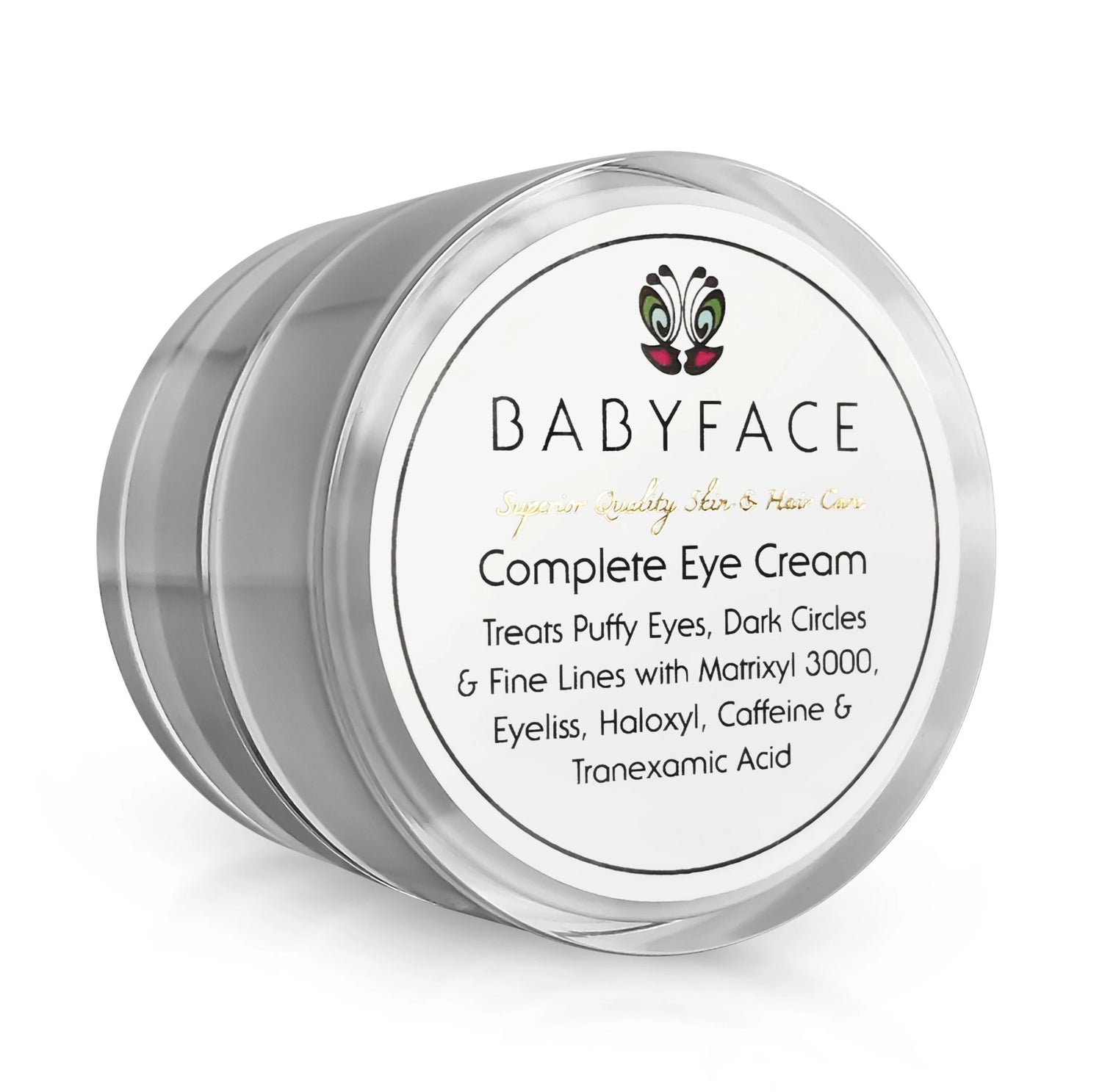Serum VS Moisturizer: What's The Difference And Do You Need Both?
Giorgia G.Share

What’s the difference between a serum and a moisturizer?
At first glance, a serum looks like a thinner, runnier version of a moisturizer. It sinks in faster, but doesn’t always provide the same hydration.
You’d be forgiven for thinking you can skip the serum and go straight to moisturizer. If you’re a teen, you can get away with it, too.
But if your skin’s in some kind of trouble - has lost its glow, erupted in an angry breakout or is aging faster than you’d like it to - a serum is just the thing that can nurse it back to health… and keep it young and glowing once the emergency has passed.
Turns out, a serum is a lot more than a lightweight moisturizer. So much more…
What’s The Difference Between Serum And Moisturizer?
Put simply, serums and moisturisers have two different jobs:
- Moisturizer: A cream or lotion designed to hold water into the skin, keeping it hydrated for hours on end.
- Serum: A lightweight liquid or lotion, its job is to deliver active ingredients (those that can fight acne, wrinkles & co.) deeper into your skin.
You can already start seeing some of the differences between them, can't you? Here are the main ways in which they differ:
- Serums penetrate skin deeper than moisturizers
- Serums are more concentrated than moisturizers
- Serums treat, moisturizers… well, moisturize
Let’s take a look at them in more details, shall we?
Serums VS Moisturizers: The Penetration Difference
Boring science bit: your skin has three layers. The top layer, called epidermis, is made up mostly of dead skin cells and sebum, the oily substance that naturally moisturizes your skin. The job of this layer is to keep moisture in and germs and other skin enemies out.
As you travel further down your skin, you reach the dermis. This is the water-based layer where your living cells (the ones that make collagen and elastin, for example) reside.
A serum contains smaller molecules that can get through the gaps in the skin and reach all the way into your dermis, where they tell your living cells what to do (for example, pump out more collagen).
A moisturizer, on the other hand, uses occlusives. These molecules are much bigger because they’re meant to stay on the surface of your skin and patch up the holes in your protective barrier.
Serums VS Moisturizers: The Concentration Difference
Perhaps the main difference between serums and moisturizers is what serums leave out. Let me explain.
Moisturizers don’t just have moisturizing ingredients. They also contain emulsifiers to help their oily and watery parts mix together so the formula won’t separate in the bottle; thickeners to adjust the texture and make it creamier; occlusives that make it harder for active ingredients to penetrate the skin. You get the drift.
Serums leave all this stuff out. Their texture is thinner, meaning they can’t hold too many ingredients. They only space for the stuff that matters.
Like antioxidants to fight wrinkles. Skin-lighteners to reduce dark spots. Exfoliating acids to get rid of dead skin cells.
Without competing for space with all the extra stuff moisturizers contain, the active ingredients in serums can penetrate skin faster and give you better results.
Serums VS Moisturizers: Treatment VS Moisture
Remember when I told you serums and moisturisers do two different jobs? Serums treat skin conditions while moisturizers help skin hold water.
Moisture is the foundation of healthy skin. When skin has all the moisture it needs, it plumps up so fine lines and wrinkles look smaller; it gets softer to the touch and glows as if lit from within.
But unprotected sun exposure, harsh weather, irritating skincare products and such can create holes in your skin’s protective barrier. All of a sudden, moisture evaporates into thin air, leaving skin a dry and flaky mess.
That’s when moisturizers come in. They strengthen your skin’s protective barrier, patch up any hole in it and keep moisture into the skin.
You can use all the anti-aging serums in the world, but if your skin isn’t properly hydrated, your complexion will still look dull and rough.
But moisture alone ain’t always enough. Your skin can be soft and hydrated, and still have dark spots, wrinkles and a whole host of other skin woes.
Because serums can reach the deeper layers where these problems originate, and are packed with actives that can fix them, they’re better able to treat them.
In other words, moisturizers prevent dryness and all the havoc that wreaks on your skin. Serums treat all kinds of problems your skin is dealing with, such as acne, wrinkles and hyperpigmentation.
Do You Need Both A Serum And A Moisturizer?
In most cases, you do.
You can skip a moisturizer and use only a serum if you have very oily skin. Your skin already produces all the sebum you need to keep your skin’s protective barrier healthy and intact.
You can skip a serum and use only moisturizer if you’re a teen or young adult with good, acne-free skin. After all, you wouldn’t take a medicine if you were healthy right?
Everyone else, you need both a serum and a moisturizer in your skincare routine. In this order.
The Bottom Line
Moisturizers prevent dryness while serums treat all kinds of skin conditions, like acne, wrinkles and dark spots. One isn’t better than the other. On the contrary, they work together to keep your skin healthy, younger-looking and glowing!
Our best selling serums:
Super-C High Potency Vitamin C Serum
Peptide Potion with Matrixyl 3000
Collagen Booster Serum with EGF
And high-performing moisturizers:

1 comment
What a good cream for dryness and wrinkles but still blackheads and whiteheads?